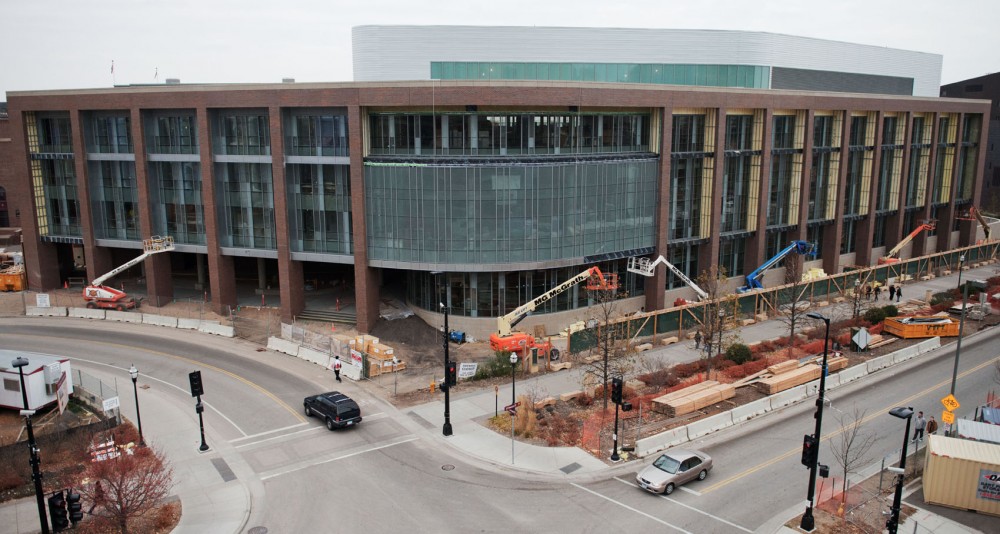With the continued work on the expansion to the University of Minnesota’s Recreation and Wellness Center, some Department of Recreational Sports employees have to take on extra responsibilities.
And it may not let up soon.
Because current University hiring procedures are stringent, the department will only be able to hire some additional full-time employees. But about 300 student positions are expected to open up with the expansion.
Facility Manager Cody Mikl said work life has definitely changed since the new construction began.
Because some upper-level employees are involved in construction meetings and walkthroughs, they don’t have as much time to perform their regular duties. That leaves other staff to divvy up the extra work.
The expansion to the recreation center will add about 175,000 square feet, more than doubling the size of the center, said Jim Turman, director of the Department of Recreational Sports.
The department employs about 50 full-time staff, including staff from the University’s golf course, Turman said.
“We just need more help,” Turman said, adding that the department submitted a plan to hire additional employees, but it hasn’t been approved yet.
Mikl said he doesn’t believe the current workload is sustainable in the long run.
“It’s hard to do a really good job when you’re having to spread yourself fairly thin and do lots of things,” Mikl said.
Although few full-time positions are expected to be added to the department, Turman said he expects to employ about 300 more students with the addition to the center. With about 600 current student employees, he said the department is the largest student employer on campus.
University administration scrutinizes requests for new positions very carefully, Turman said.
“Budgets are tight, and people are more concerned about it,” he said.
A hiring pause was established in fiscal year 2010, said Jerry Rinehart, vice provost for student affairs. That means units have to be thoughtful when considering creating or filling positions, said Lori Lamb, director of human resource operations.
Rinehart said careful hiring procedures are still in place, and no one is hired without review by three layers of administration.
To avoid increasing costs for students, the University should be cautious about creating new positions, Rinehart said.
But he said he thinks students expect to pay a little more for access to new and expanded facilities like the recreation center.
“We’re very excited about the project, but it’s a pretty significant volume of work,” Mikl said.
Turman said employees are helping plan what kind of facilities should go into the new center and what should be in them, in addition to performing their regular duties. Employees are generally enthusiastic about adding the new facility, he said.
“I think people will do what is asked of them if they can see that it’s important,” he said. “You get paid a salary to do a job and get it done.”
Turman said although the department can’t ask civil service employees or unionized employees like the Teamsters to work extra hours to cover the extra work, it can ask professional and administrative staff.
When directors are at construction meetings, Mikl said, someone else might have to fill in for them at other meetings.
Turman said he expects staff to go to their meetings and have a colleague cover for them if they can’t.
Although Turman said he’s optimistic the recreation center will be able to get all the staff they’ve requested for the new center, he acknowledged that it might not turn out as planned.
“You usually don’t get everything you want,” he said.


